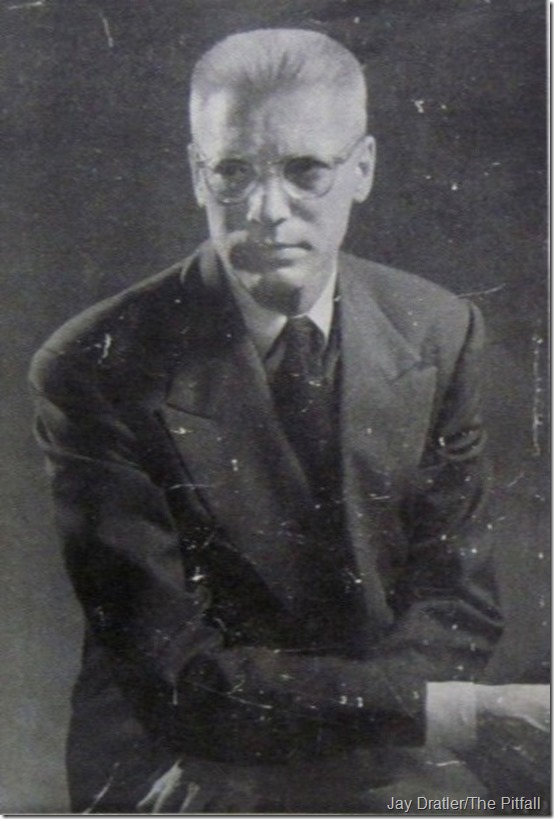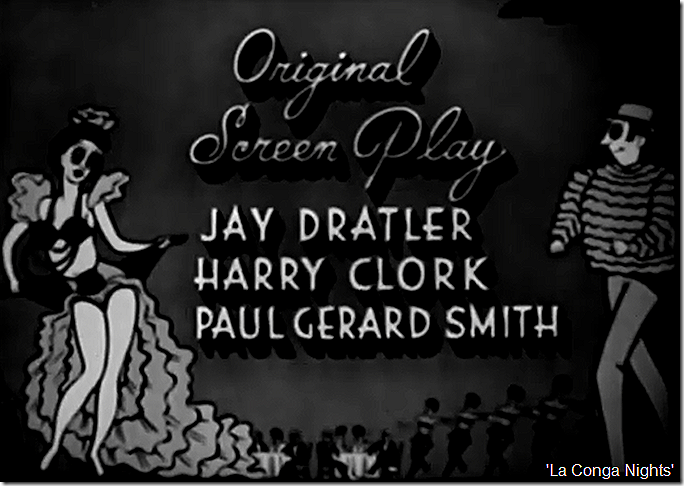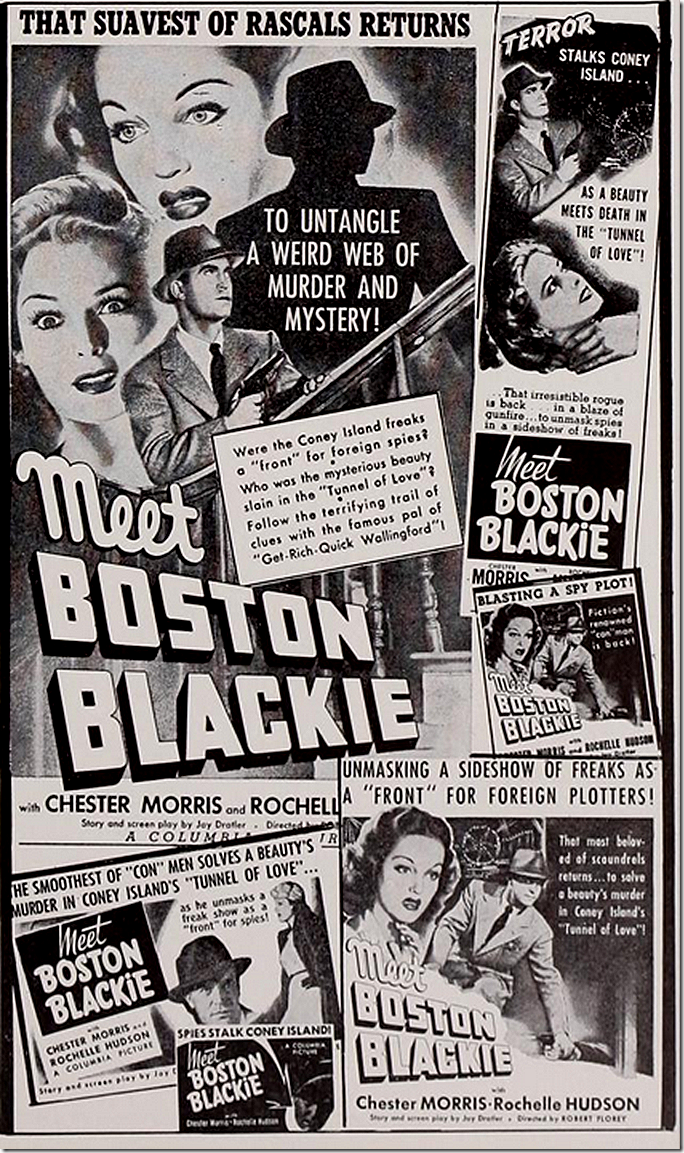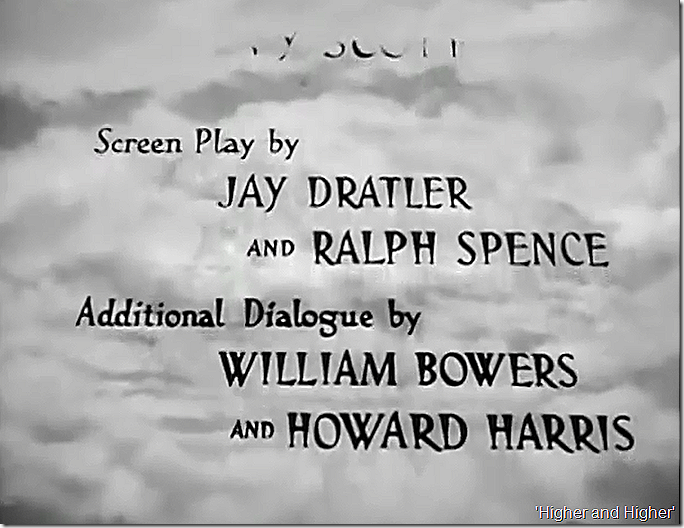
Jay Dratler in a photo from the jacket of his novel “The Pitfall,” listed on EBay at $245.
In his discussion of the making of “Laura” in “Behind the Scenes,” film scholar Rudy Behlmer quickly dispenses with Jay Dratler, who wrote the first draft of the screenplay:
Jay Dratler, a well-educated and cultured writer from the east who had done postgraduate work at the Sorbonne before writing some novels, was selected to do the adaptation and screenplay of “Laura” because of his sophisticated and urbane background. He had been in Hollywood only about three years, working as a free-lance writer on a few undistinguished B films and routine program pictures (“La Conga Nights,” “Meet Boston Blackie,” “Fly by Night”).
Behlmer was writing in 1982, long before the conscientious researcher had access to the online archives of newspapers and magazines, which may be why his research is less than perfect. Whatever the reason, Dratler deserves a better accounting of his career.
The Making of “Laura” Part 1 | Part 2 | Part 3 | Part 4 | Part 5 | Part 6 | Part 7 | Part 8 | Part 9 | Part 10 | Part 11 | | Part 12 | Part 13 | Part 14 | Part 15 | Part 16 | Part 17 | Part 18 | Part 19 | Part 20 | Part 21 | Part 22 | Part 23 | Part 24 | Part 25 | Part 26 | Part 27 | Part 28 | Part 29 | Part 30 | Part 31 | Part 32 | Part 33 | Part 34 | Part 35 | Part 36 | Part 37 | Part 38 | Part 39 | Part 40 | Part 41 | Part 42
James Ellroy to script remake of ‘Laura’
New research shows that Dratler arrived in Los Angeles and was put under contract to MGM in October 1937, six years before he turned in his draft of “Laura.”

A June 2, 1938, ad in the Film Daily lists Jay Dratler as an MGM writer in distinguished company.
His contract apparently expired after a year, because in November 1938, Dratler and Aleen Wetstein sold an original titled “Youth in America” to Universal. (Motion Picture Herald).

Jay Dratler, Harry Clork and Paul Gerard Smith get credit in “La Conga Nights.”
Dratler also wrote the script — with Harry Clork and Paul Gerard Smith — for the 1940 Universal comedy “La Conga Nights,” a curious film in which Hugh Herbert played six roles, five of them in drag as his mother and four sisters.
Also in 1940, he sold the original stories “Siege of Alcazar” and “Mystery Swingsters” to Universal, and he sold the story “Angel Cake” (with A. Dorian Otvos) to Columbia. He also drew less than glowing reviews for the Columbia picture “Girls Under 21” (Film Daily called it “a drab picture of slum life”) and was mentioned in reviews of the Universal picture “Where Did You Get That Girl?” which was part of a series of films based on modern interpretations of old songs.
What helped put Dratler on the map was the 1941 Columbia picture “Meet Boston Blackie” (followed by “Confessions of Boston Blackie”), which launched a series of 14 films through the 1940s starring Chester Morris as the debonair jewel thief, matching wits with Richard Lane as the intrepid Inspector Faraday.

“Meet Boston Blackie” in Film Bulletin.
“Meet Boston Blackie” received a tepid review from Variety (March 5, 1941): “a slim yarn that rings as true as a tin cup and with the low quality of production sets the film down low in the B category.”
Film Daily (Feb. 27, 1941), however, was far more positive: “There is plenty of action in this new Columbia meller, with murder, espionage and skullduggery in wholesale lots before an exciting climax is reached. The cast is capable, the story moves along briskly, the direction is good and for a program offering the film has more than an adequate production value. Exhibitors should find this picture readily usable screenfare.”
Dratler closed 1941 with a deal with Columbia for an adaptation of “Highly Irregular,” with Gina Kaus, who wrote the original story.
Dratler had another productive year in 1942, starting with reviews of Paramount’s “Fly by Night,” which he adapted. The Motion Picture Herald gave the picture a weak review (exhibitors at a pre-release screening at the Ambassador laughed in the wrong places) but the Showmen’s Trade Review called it a “perfect supporting feature.”
Kaus and Dratler sold another story to Columbia, “Knights Without Armor,” a story about Yugoslav guerrilla warfare.
In April 1942, “Highly Irregular,” with Franchot Tone and Joan Bennett, was released by Columbia as “The Wife Takes a Flyer.” In an America battered by Pearl Harbor and struggling to respond in the early days of World War II, the film was called a “riotous comedy kidding the Nazis sick, should provoke terrific box office invasion,” according to Film Daily.
In another project with Kaus, Dratler sold the original story “Next of Kin” to MGM in August 1942. He also got a writing assignment on “The Grand Street Boys” and sold the original “Never Been Liked” to Universal.
Dratler began 1943 with passable reviews for Universal’s “It Comes Up Love” with Gloria Jean and Donald O’Connor. “Unusually good little comedy should go over solidly with family audiences,” Film Daily said.
And in March 1943, he began work on the RKO picture “Higher and Higher,” which was to be Frank Sinatra’s film debut.

Jay Dratler’s credit in the RKO picture “Higher and Higher.”
Released in December 1943, “Higher and Higher” received rave reviews in the trades. “Pic trades on the Sinatra craze with sensational results; plenty of comedy and musical numbers. Headed for top coin,” according to Film Daily. Motion Picture Daily called the film “a musical comedy of quality and distinction in all departments. It would be an excellent example of escapist entertainment without Sinatra. With Sinatra, it’s a box office bonanza.”
And then in June 1943, after completing “Higher and Higher,” Dratler began work on “Laura.”
To be continued.


I cannot tell you how much this detailed investigation of Laura has enhanced my enjoyment of the film. For delving into mysteries both fiction and nonfiction, I thank you very much.
LikeLike
Why thanks! It has been fun. 🙂
LikeLike
The number of important American writers on the MGM 1937 Writers List is nothing but amazing. It reminds us of the role of the Hollywood studio system in keeping writers well fed and watered during the Depression.
LikeLike
It is a most impressive array of talent… I was pleased to stumble across it.
LikeLike